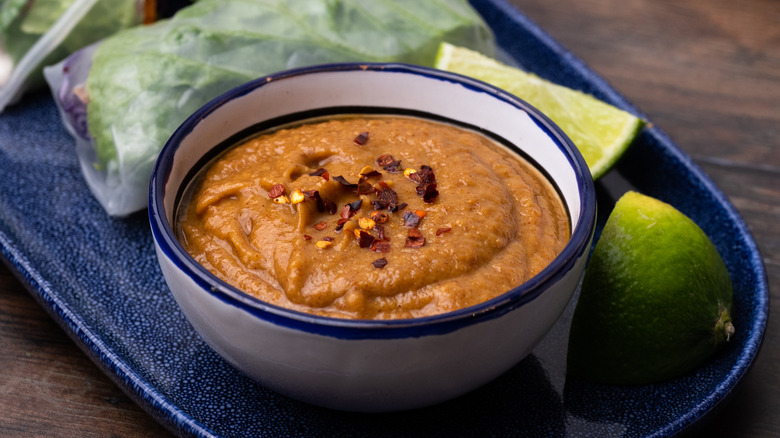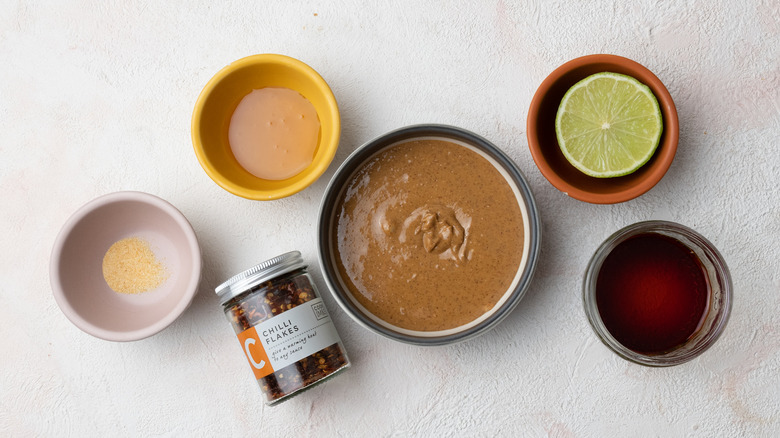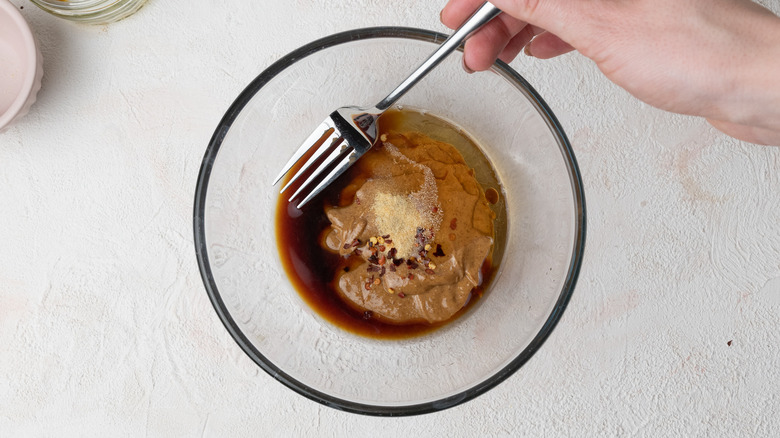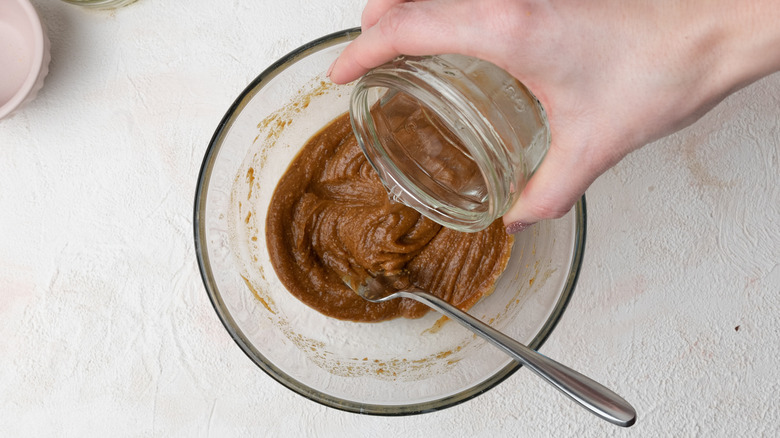Satay-Style Peanut Sauce Recipe
Satay-style peanut sauce is a delicious, peanut-based sauce that originates from Indonesia. With a wonderful balance of salty, sweet, and spicy flavors, this sauce will add a nutty kick to any meal it accompanies, and can be served either warm or cold.
To maximize the flavor this recipe, you will want to use the highest quality peanut butter you can find. There are many delicious brands of peanut butter, though many contain additives such as palm oil and preservatives. For the best flavor and texture, the best peanut butter to use for this sauce will be made from pure ground roasted peanuts. That said, any peanut butter you may have lying around at home will work in a pinch. You may even prefer to make your own! And, it is your choice whether you prefer to use smooth or crunchy peanut butter; both work equally well and result in a mouthwatering sauce.
This satay-style peanut sauce is wonderfully versatile and can be used as a sauce for noodles or meat, for adding to stir fries, or as a dip for vegetables. Quick and simple to make, and bursting with flavor, recipe developer Jennine Rye recommends enjoying this recipe as a dipping sauce alongside some homemade spring rolls, filled with fresh vegetables and chicken, for a nutritious and delicious protein-rich lunch or dinner option.
Gather the ingredients for this satay-style peanut sauce
To make this satay-style peanut sauce, first you will need to gather the ingredients. You will need peanut butter, lime juice, soy sauce, powdered garlic, honey, and chili flakes. This recipe also uses a few tablespoons of cold water.
There are several different types of soy sauce available from stores, which can get confusing. For this recipe, we recommend sticking with Japanese soy sauce, or Tamari if you are looking for a gluten-free alternative, for the best end product.
Add the ingredients to a bowl and mix
Using a medium sized bowl, simply add the peanut butter, the lime juice, your chosen soy sauce, powdered garlic, and honey. Add a pinch of chili flakes — feel free to add more if you prefer more heat — then mix everything together using a spoon or a fork. At this point, it is a good idea to taste the mixture, to see whether the flavors are balanced to your liking.
Add water to the sauce
At this point, the sauce will likely be very thick. To thin out the sauce and create a better consistency, add 1 tablespoon of water at a time to the bowl and mix it in, until the desired thickness has been reached. Due to differences in the consistency of different brands of peanut butter, different quantities of water may be necessary, but we recommend starting with two to three tablespoons and adding further tablespoons of water if you need it.
Then, all you will need to do is transfer the sauce to an airtight container and refrigerate it until serving. This satay-style peanut sauce lasts well for up to a week when stored in the fridge. Naturally, this sauce pairs well with chicken satay, but you could also enjoy it as a topping for stir fry, ramen, or with fresh spring rolls.
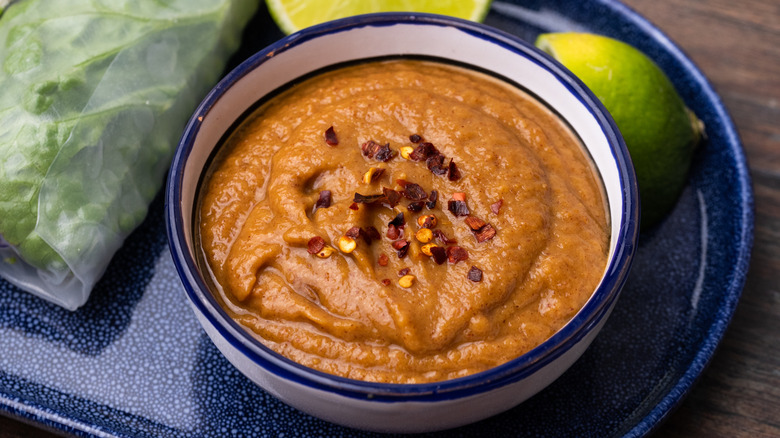
- ½ cup peanut butter
- 2 tablespoons lime juice
- 2 tablespoons soy sauce
- ¼ teaspoon garlic powder
- 1 tablespoon honey
- pinch of chili flakes
- Add the peanut butter, lime juice, soy sauce, garlic, honey, and a pinch of chili flakes to a medium-sized bowl. Mix everything together with a spoon or a fork.
- Depending on the desired consistency, mix in 2-3 tablespoons of water to thin out the sauce.
- Serve right away or store in the fridge for up to 1 week.
Nutrition
| Calories per Serving | 216 |
| Total Fat | 16.6 g |
| Saturated Fat | 3.3 g |
| Trans Fat | 0.0 g |
| Cholesterol | 0.0 mg |
| Total Carbohydrates | 12.7 g |
| Dietary Fiber | 1.7 g |
| Total Sugars | 7.9 g |
| Sodium | 445.4 mg |
| Protein | 7.9 g |
